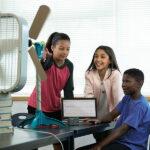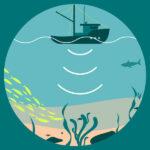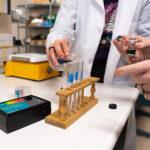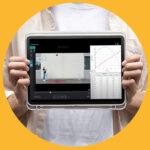
Sharing ideas and inspiration for engagement, inclusion, and excellence in STEM
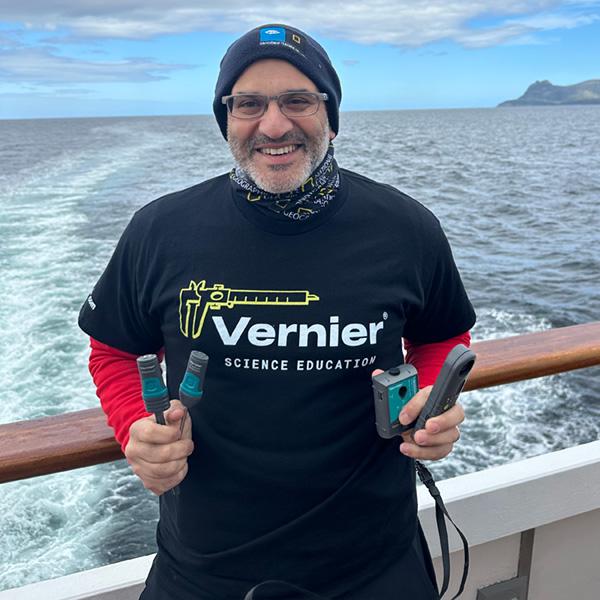
The Grosvenor Teacher Fellowship (GTF) is an experiential professional development opportunity offered through the National Geographic Society and Lindblad Expeditions. This program sends teachers out on expeditions to remote locations to inspire them to inspire their students.
When I found out that I had been selected to the 2023 GTF cohort, I immediately started thinking of ways that I could collect data while on expedition. I had been chosen to travel to Antarctica, which I knew would be an exciting opportunity to do science. As a physics teacher, there were lots of ways that I could acquire data I could use with my students, and I realized quickly that I should collect data in the same way that my students do—using Vernier sensors.
I contacted Vernier and was put in touch with two of their scientists—Robyn and John Gastineau—as they have traveled to Antarctica in the past. We met up over Zoom and they had lots of great suggestions on the sensors that I should bring and some ways I could use them. In the end, I brought the following probes: Go Direct® Force and Acceleration, Go Direct Temperature, Go Direct 3-Axis Magnetic Field, and Go Direct Weather Station. In addition to the Vernier sensors, I brought a thermal camera and several cosmic ray detectors—more than enough things to keep me busy during my expedition.
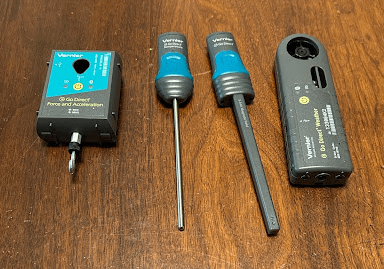
During my expedition, I was determined to take part in all opportunities on and off ship and to collect as much data as I could. Early on, we had the opportunity to kayak in Admiralty Sound. The sun was out and the water was a fantastic shade of blue. Once we were out on the water, I could tell that its temperature was near freezing. There were thin sheets of near-invisible ice forming on the surface that crunched when our paddles went through them. It was the perfect chance to check the temperature and illustrate how dissolved salt lowers the freezing point. The water should be below 0°C, but still liquid.
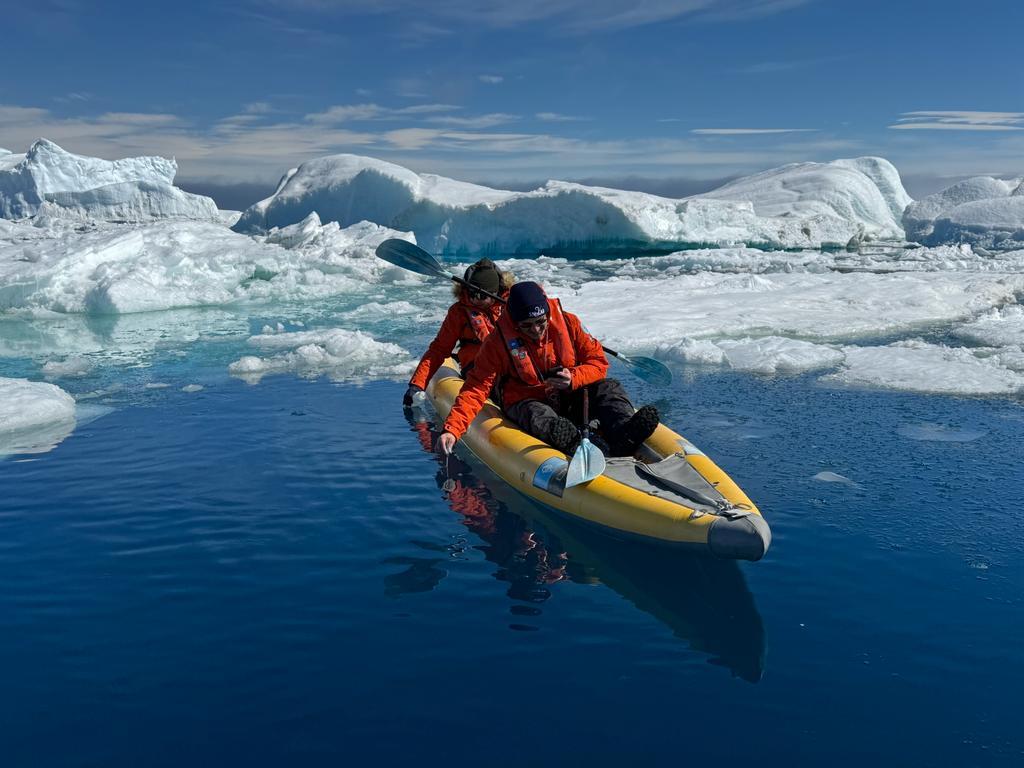
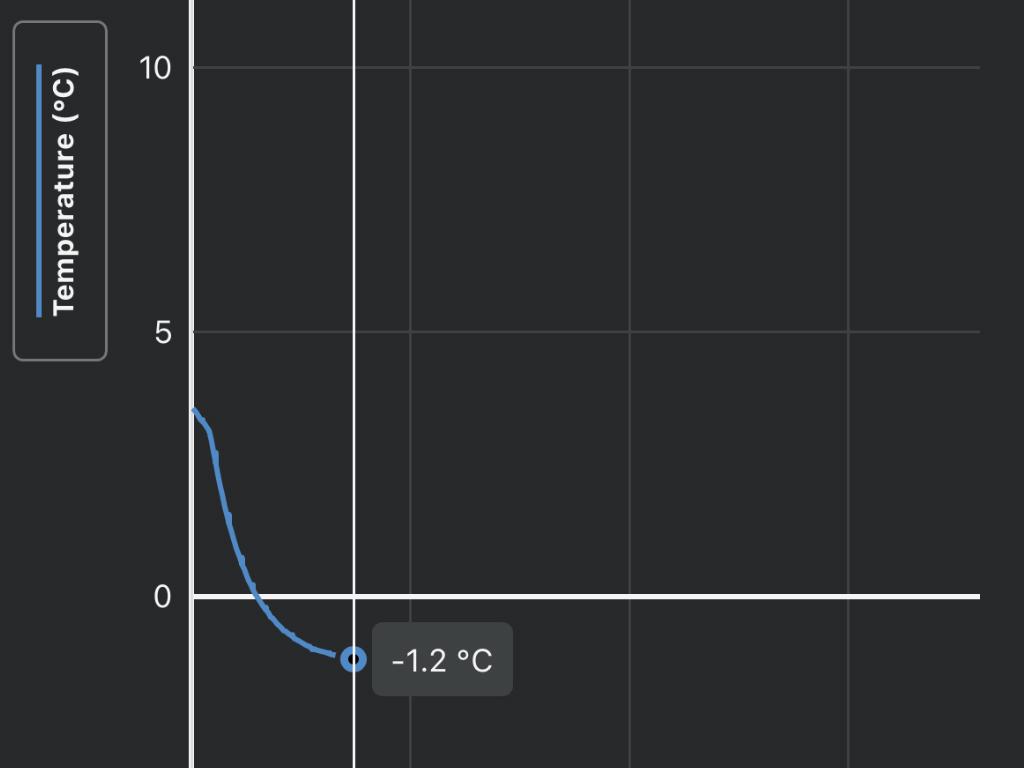

As predicted, the water was a chilly –1.2°C, which proved significant soon after when we had the chance to do a polar plunge into the Southern Ocean.

At several points along the way, I took out the Go Direct Weather System to monitor local conditions. For the first few days, we had either overcast skies or bright sunshine, but on the fifth day of the expedition, things took a much more Antarctic turn. As we visited Port Charcot, we had the first sustained snowfall of our time on the frozen continent. As we came ashore, I noticed that the wind had picked up compared to our other landings and that it was noticeably colder. I took the opportunity to collect some further weather data.
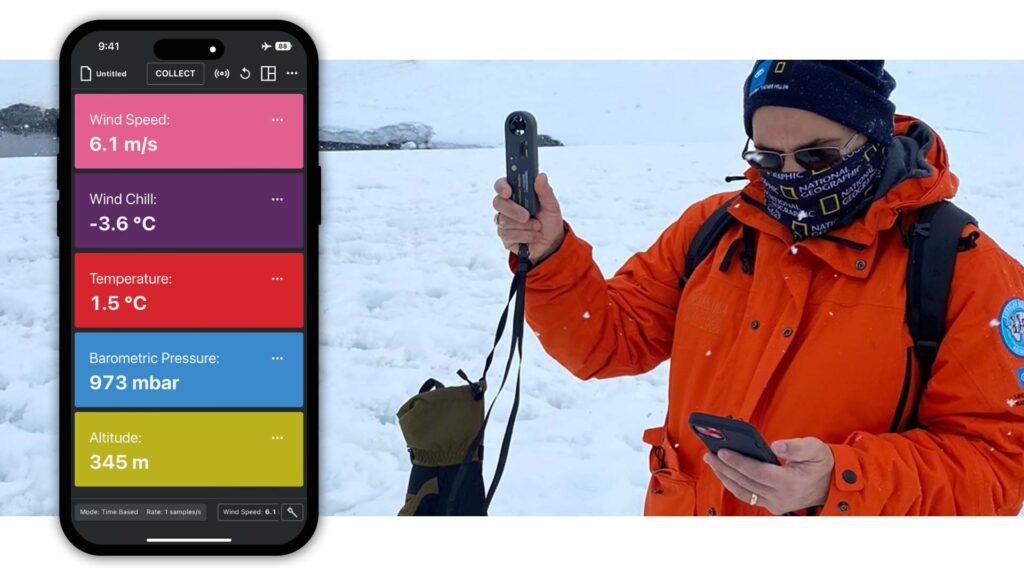
One suggestion that John and Robyn gave me was to bring an accelerometer to measure the rocking of the boat. The Drake Passage is a famous crossing between the southern tip of South America and the Antarctic peninsula and is known to have some of the roughest seas in the world. We were fortunate to have a fairly smooth crossing—only 3 meter waves—but I did still get some interesting acceleration data that I can use in class. I almost wish that we had stormier seas!
Bringing Vernier sensors with me gave me a great way to connect my students and my Antarctic expedition. By using the same sensors that they do in class, they see the lab work that they do validated. The data that I collected will be used in lessons for years to come and hopefully help students see ways that they can do science outside of the classroom.
Joe Muise is a high school physics teacher at St. Thomas More Collegiate, in Burnaby, British Columbia, Canada. He was a 2021 recipient of NSTA’s Vernier Software & Technology Award. For more details on his Antarctic experience, check out his blog.
The Grosvenor Teacher Fellowship is an experiential professional development opportunity provided by a partnership between the National Geographic Society and Lindblad Expeditions. Applications typically open in the late fall and close in early January.
Share this Article

Sign up for our newsletter
Stay in the loop! Beyond Measure delivers monthly updates on the latest news, ideas, and STEM resources from Vernier.

